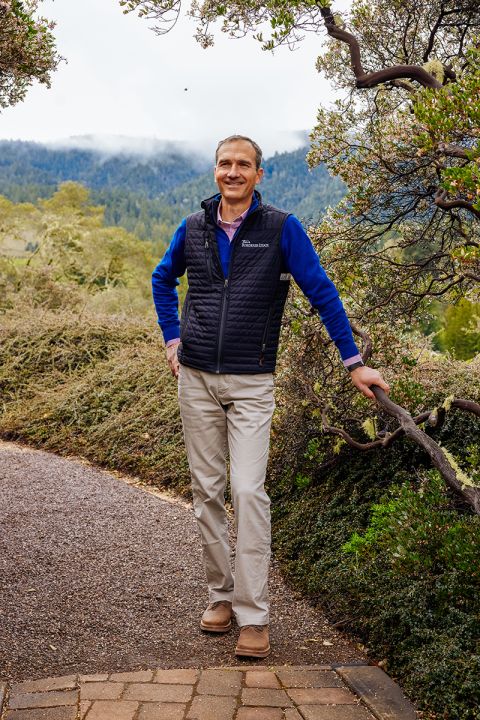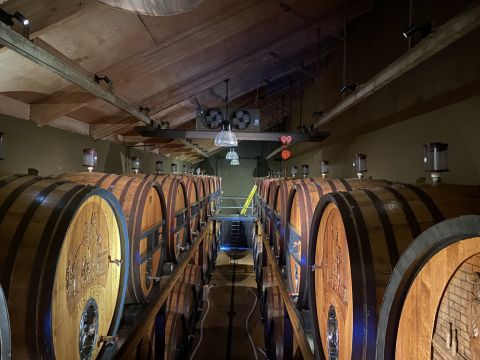It started as a shallow affair. I was on my way to brunch at a friend’s. I knew I adored Roederer champagne. The non-vintage Brut sparkling wine from their US project, Roederer Estate in Anderson Valley (called Quartet everywhere else in the world to avoid confusion with the champagne), seemed a safe bet. And the price was low enough that I wouldn’t mind when someone inevitably dumped orange juice into it. Except … I did mind.
Not immediately. This wine doesn’t really start to show itself until it’s had a chance to warm up in your glass. But by the time the bottle was half gone I had spirited it away into a corner to dole out to those who would drink it neat. It was round and full but with excellent acidity and the finish had evolving notes of dairy, yeast, toast, nutmeg and spicy cedar.
Since then, this wine has gone on my ‘wines that always deliver’ list. And, in addition to being delicious and excellent value, I’ve found that I enjoy the company philosophy and people behind the project.
The Roederer Estate in California’s Anderson Valley was purchased in 1982 (a year before the establishment of the Anderson Valley AVA) by Jean-Claude Rouzaud, then president of Champagne Louis Roederer. Knowing that he wanted to produce sparkling, Rouzaud searched the coolest pockets of Carneros and Green Valley before finding Roederer’s 340-acre (138-ha) property in Mendocino – 11 miles (18 km) from the coast. Roederer Estate’s current winemaker, Arnaud Weyrich, told me a few years ago when I visited, ‘the marine layer here makes heating cycles weaker. We needed to be somewhere we could make what we wanted [sparkling]. If we had gone further inland and lost the marine influence, it would be too hot.’
The company, still family-owned, and retaining the mindset that your brand is your land, has put a high premium on keeping everything estate-farmed. As the demand for the wine has grown, the property has expanded to 620 acres (251 ha) – though this also provides 100% of the fruit for their Domaine Anderson label and some of the fruit for their Scharffenberger label. The 45-person viticulture team is all in-house and many of them live on the property. And, because Roederer Estate hires seasonal labour directly from Central America (rather than through a labour contractor), the company provides their seasonal employees with housing on the property, pays all expenses, provides travel to and from their location to Anderson Valley, and guarantees them a set wage before they begin travelling. This arrangement encourages the same workers to return year after year.
The property is planted entirely to Pinot Noir and Chardonnay with planting density and trellising systems varied according to the soil profile and climatic influences. The company makes and utilises their own compost, recycles all wastewater and continues to increase the acreage farmed organically (currently 110 acres/45 ha).
For Roederer Estate Brut, Weyrich uses an average of 60% Chardonnay and 40% Pinot Noir. Pressing cycles are in keeping with the house’s champagne protocols in which only the cuvée (first pressing of 120 gallons/ton) is used – the rest of the pressings are sold. After primary fermentation, the wine is based on one vintage with partially oak-aged reserve wines from 3–7 vintages making up 10–15% of the blend. After secondary fermentation, this wine spends a minimum of 24 months (but an average of 30 months) on the lees in order to develop creamy, nutty aromas.
When I asked Weyrich about the main difference between making wine in Anderson Valley compared with his years spent making champagne, he shared, ‘Anderson Valley, at picking, has more acid because of the shorter season. The season starts earlier, and you have much colder nights.’ On average, the time between budbreak and harvest is 5–10 days shorter than in Champagne, and budbreak can happen up to two weeks earlier.
He tells me that, in the highest-acid vintages, he may choose to use malolactic conversion to reduce total acid on no more than 10% of the blend. But malolactic isn’t the house style and, generally speaking, he prefers to balance the wine with around 10 g/l dosage. ‘This is slightly higher than the dosage we would use for Brut champagne but that is because the acid is higher.’
Once the wine is finished, the disgorgement date is stamped on the base of the foil and Weyrich shares a tip: ‘It needs at least four months to marry before drinking; otherwise the wine is not as good.’ The bottling I am currently sipping was disgorged in January 2023 and is showing fabulously; read my full tasting note here.
This wine is distributed by Maisons Marques & Domaines in the UK and is carried by dozens of stockists – the lowest per-bottle price in the UK listed on Wine-Searcher comes from The Champagne Company. In the US, it’s available from the winery at $32 and is widely available at grocery stores and wine stores across the country, often at a discount. It is also available in Japan, Hong Kong, Sweden, Germany, Denmark and Singapore.
Find this wine outside the US
Find this wine in the US
All photos courtesy Roederer Estate.
Like sparkling wines? Members can access more than 10,000 tasting notes on sparkling wines in our tastings note database.
















